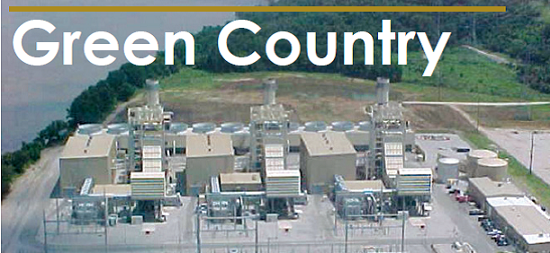Leadership training: Equipping plant leaders for new, greater challenges
Challenge. The changing of the old guard has begun in America’s powerplants and that phenomenon is in full swing at Green Country Energy. Highly experienced supervisors and managers, who went through extensive technical and leadership training over the past 30 to 40 years, have either recently retired or are making plans to retire within the next few years.
These personnel changes have and will result in younger supervisors and managers taking the reins at the facility, faced with expectations from HQ that pre-existing positive work cultures and top performance results will continue in future years.
And to make the said challenges more interesting, the significant administrative and regulatory demands placed on today’s powerplant supervisors and managers are only expected to increase in the future, thereby resulting in less time for plant managers and supervisors to properly focus on their core function—to manage the safe and efficient production of reliable energy.
Solution. Strong leadership skills will be required to meet the increasing challenges of the future, and good leadership training is very important to the development of strong leaders.
Our facility has conducted some measure of leadership training over the past 13 years, but the mentioned recent and expected future personnel changes obviously warrants a more determined and focused effort to properly prepare the plant’s leaders for the challenges they will face.
Therefore, a two-year leadership training initiative was commissioned during 2013, with the principal objective of reinforcing the plant’s long-term leadership core values and guiding principles.
The foundation for the leadership training involved discussions associated with the practices of an exemplary leader, using “The Leadership Challenge,” (Kouzes and Posner), as the guiding text. The training focused on a leader’s role in: modeling the way; inspiring a shared vision; challenging the process; enabling others to act; and encouraging the heart.
The training was attended by department managers and supervisors, administration staff, and lead technicians. Also participating were managers from NAES and J-Power USA headquarters. The employees were divided into four groups, with the training scheduled within a three-week time period. The four groups were comprised of a mix of technical and supervisory levels within each group.
Although there are many leadership training consultants available who offer excellent leadership training packages, ultimately it was determined that the plant manager should present the material and lead the discussions.
Leading the operations and maintenance groups at powerplants presents some unique leadership challenges. So, who better to facilitate the leadership discussions than someone who can empathize with the challenges the leadership team are facing? Who better to understand the disappointments and rewards experienced by powerplant leaders than someone who has walked in their shoes and experienced the challenges first hand?
The training consisted of two sessions with five additional sessions planned, staged six months apart. A PowerPoint presentation was developed for the training and used to direct the discussions.
Results. Feedback from the various participants indicated the training was well received. In addition to discussing the plant’s core values, guiding principles and five practices of an exemplary leader, many other topics were discussed.
For example, the training provided a very good forum to discuss the following:
- Previously unknown and festering issues present within the workforce.
- Various perceptions and misperceptions that exist.
- Promote additional “bonding” between various supervisory levels and technical disciplines.
- Clarify management’s priorities, objectives, and expectations.
- Flush-out new ideas dealing with old and new problems.
- And likely most needed: Remind the plant manager of the leadership techniques and practices he should be consistently modeling.
Obviously, the long-term benefits of this leadership training are not known at this time. Nevertheless, the ultimate desired deliverable for tomorrow’s leaders is to continue in the Green Country Energy tradition of producing outstanding performance results for many years to come.
Project participants: GCE leadership team
Green Country Energy
Owned by J-Power USA
Operated by NAES Corp
800-MW, gas-fired, 3 × 1 combined-cycle located in Jenks, Okla
Plant manager: Rick Shackelford




